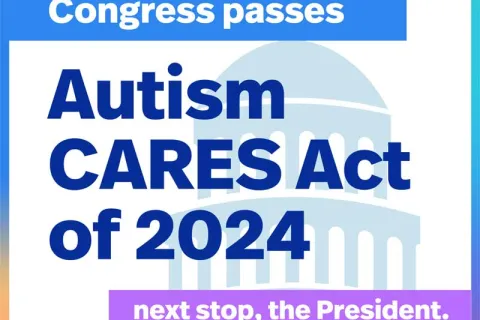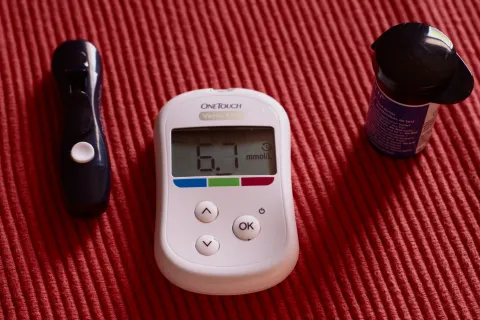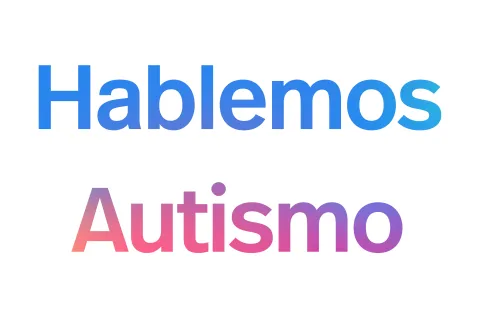Benefits of exercise for people with autism
By Dr. Sean HealyGuest post by Sean Healy, author of a new meta-analysis of research on the benefits of exercise for autistic youth. Dr. Healy is an assistant professor in the Department of Behavioral Health and Nutrition, at the University of Delaware. He conducts research on physical activity adapted to the needs of special groups.
The phrase “exercise is medicine” is a common refrain among fitness experts and health practitioners. A wealth of research gives credence to this truism. And now – thanks to a growing number of studies involving youth with autism – we can confidently say that physical activity provides them with a wide range of benefits.
Autism and exercise: The wide-ranging benefits
I recently published the results of my team’s meta-analysis of 29 studies looking at the benefits of exercise among more than a thousand young people on the autism spectrum. In a meta-analysis, we combine the findings of multiple studies to gain a deeper and more reliable picture of a potential effect of an intervention.
Overall, we found that physical activity programs for youth with autism produced moderate to large benefits in a variety of important areas. These include improving motor skills, skill-related fitness, social functioning and muscular strength and endurance.
- Social skills: Our meta-analysis showed that youth who participated in physical activity programs designed for individuals with autism showed significant gains in their social and communication skills. The activities included horseback riding, various types of group play, running/jogging programs and exergaming (e.g. Nintendo Wii and other electronic games that involve physical activity).
- Researchers have considered why physical activity improves social skills. When designed appropriately, physical activity programs can provide a fun, safe setting for interacting with other children. In other words, they can offer excellent opportunities for practicing social skills. In addition, activities involving animals (e.g. horseback riding) provide children with a fun way to interact nonverbally as well as verbally.
- Fitness: It’s very encouraging that our analysis confirmed that youth on the spectrum significantly improved their muscular strength and endurance by participating in programs such as exergaming, aquatic exercise and horseback riding. This is particularly important as we knew from previous studies that people with autism tend to have poorer muscular strength and endurance than is typical for their age. Strength and endurance are important for not only physical health, but also for taking advantage of social opportunities that involve physical activity including recreational sports and non-structured games.
- Skill-related fitness: Many individuals with autism have lower fitness skills compared to other people. These skills include balance, body coordination, visual-motor control and other mobility skills. Here again, we were encouraged to find that many types of physical activities improve skill-related fitness for youth with autism. These activities included computer-based exergaming, jumping on a trampoline (with supervision and safety barriers), motor skill training (e.g. table tennis) and horseback riding.
- Motor skills: Many kinds of physical activities – and the social opportunities they afford – require what we call “fundamental motor skills.” These basic skills include running, throwing, catching and so on. Again, our analysis showed that exercise programs significantly improved these skills among youth with autism.
Autism-friendly strategies for encouraging physical activity
Research and our clinical experience have helped us understand and address many autism-related barriers to enjoyable participation in physical activity.
Understanding aversions
Recently I encouraged a boy with autism to play alongside his peers during recess. He replied, “I don’t think you could design a worse place for me to be!” I got it. I was asking him to enter a setting that was social, active, loud and unpredictable – all qualities he disliked.
Several issues make physical activity less appealing for many people with autism. These include poor social and motor skills, a preference for screen-based activities, and a lack of exercise partners and autism-friendly opportunities for physical activity in our communities. The good news: We have strategies to help.
Here are some practical tips for encouraging regular physical activity:
- Start small: The Centers for Disease Control and Prevention (CDC) recommends that children get at least an hour of physical activity daily. That’s good to know, but I suggest starting with a more modest goal and building from there. We’ve found that shorter periods of physical activity, spaced throughout the day, tend to be easier to maintain. Remember: The goal is to make physical activity a regular and enjoyable part of daily life. So, be patient and think long term. Here are some ways to add physical activity into a daily routine:
- Walking to school (or work) – or at least some of the way.
- Walking the dog (if you have one).
- Turn TV advertisements into exercise breaks. I recommend a few minutes of a rigorous activity such as jumping jacks. Join your child in the fun.
- Make a family trip to the playground a regular, after-dinner activity. If you can walk there, even better.
- I recommend gradually expanding the amount of time spent in these and other activities – with the aim of ultimately achieving the recommended daily hour of physical activity.
- Build motor skills: Keep in mind that your child will need to build some fundamental motor skills to successfully participate in physical activities and sports. You can make this skill-building enjoyable by playing games that encourage your child to:
- Move in different ways (e.g. run, jump, hop, and skip)
- Play with different types of equipment such as balls, bats and racquets (e.g. throw, catch, kick and strike).
- Practicing these skills at home can foster your child’s success in physical education class, while increasing the likelihood that he or she will enjoy other socially engaging physical activities such as playground games and recreational sports.
- Sample different types of physical activity: Our analysis identified a wide range of activities that can deliver benefits. From table-tennis to swimming, from riding bikes to riding horses, there’s an abundance of physical activities that you or your child can try. I suggest sampling from the menu. Ideally, include one or more activities that encourage:
- Fitness: An activity that involves moderate to vigorous activity – activity that gets a person breathing heavily.
- Social interaction: An activity that involves one or more other people, such as tennis or catch.
- Independence: An activity that can be done alone, such as a home fitness or yoga routine – perhaps with the help of a video.
- Be a role model and enlist friends and family: As a parent, you are the most important role model for your child. I encourage you to model an active lifestyle for your child. Show them the enjoyment and value you gain from being active. Next, consider the many people who interact with your child on a daily or weekly basis and how might you enlist them to encourage your child’s physical activity. Teachers, especially physical education teachers, can be a great influence. Share your aspirations and strategies for your child. If your child has an Individualized Education Plan (IEP), be sure to include physical education goals in your IEP discussions. If possible, invite the PE teacher to attend the IEP meeting. Also consider contacting the people who run recreational sports programs in your community. Some may worry that they lack the skills to engage and include someone with autism in their programs. You may be able to give them the confidence they need by sharing your strategies for communicating, motivating, and instructing your child.
- Tips for making physical activities autism friendly: Here are three practical strategies commonly used in activity programs designed for youth who have autism:
- Someone who understands: Ideally, we want people with autism – especially children and teens – to have access to physical activity programs led by facilitators who understand how to communicate and motivate participants in autism-friendly ways. This doesn’t have to be a professional in the field of autism. It can even be a “peer tutor” – another child who understands how to communicate with your child and can provide some one-on-one support.
- Get Visual: Many people with autism are visual learners. Visual supports such as task cards, physical demonstrations and video modelling often prove very helpful.
- Routine: Most of us need routine, and this appears to be especially true for many people on the spectrum. I suggest building a regular and predictable structure into the physical activity program. Create a visual schedule to help reinforce the routine. (See the Autism Speaks Visual Supports Tool Kit link above for instructions on making a visual schedule.)
I hope these insights and strategies prove helpful and that you’ll share them with others.
We would like to see more research on the benefits of exercise for people on the autism spectrum and on the type and duration of activity that provides the greatest benefits. We also want to improve how we tailor and personalize physical activity programs to each participant needs and goals.
Most importantly, perhaps, we need to understand how to promote lifetime physical activity for people who have autism.
Meanwhile, we hope that our encouraging findings will inspire fitness practitioners, physical-education teachers and parents to engage children, teens and adults with autism in a wide range of activities. The benefits appear to be tremendous.
Related resources
- More on the importance of a healthy lifestyle for people with autism and their families
- Autism Speaks Visual Supports Tool Kit









